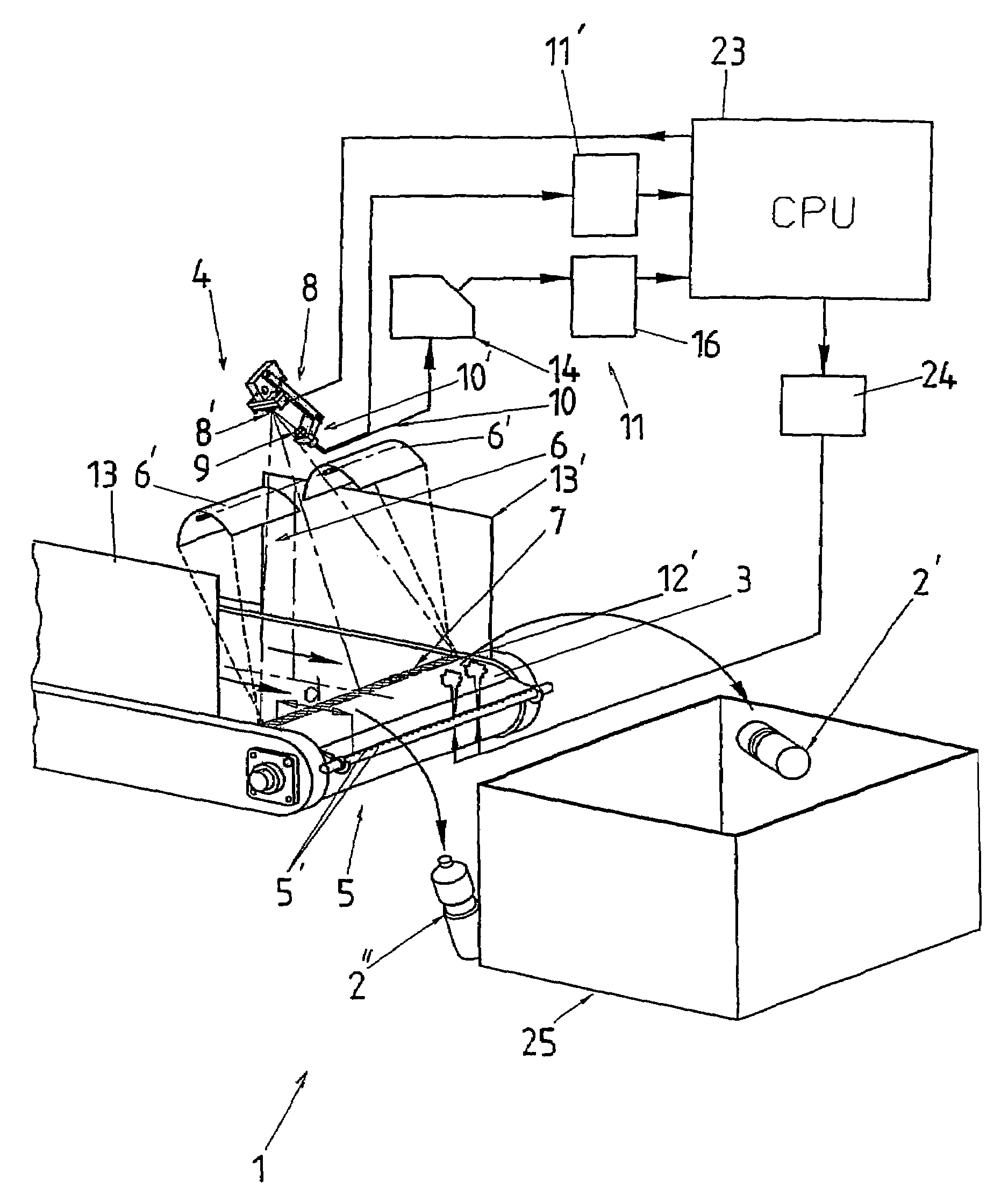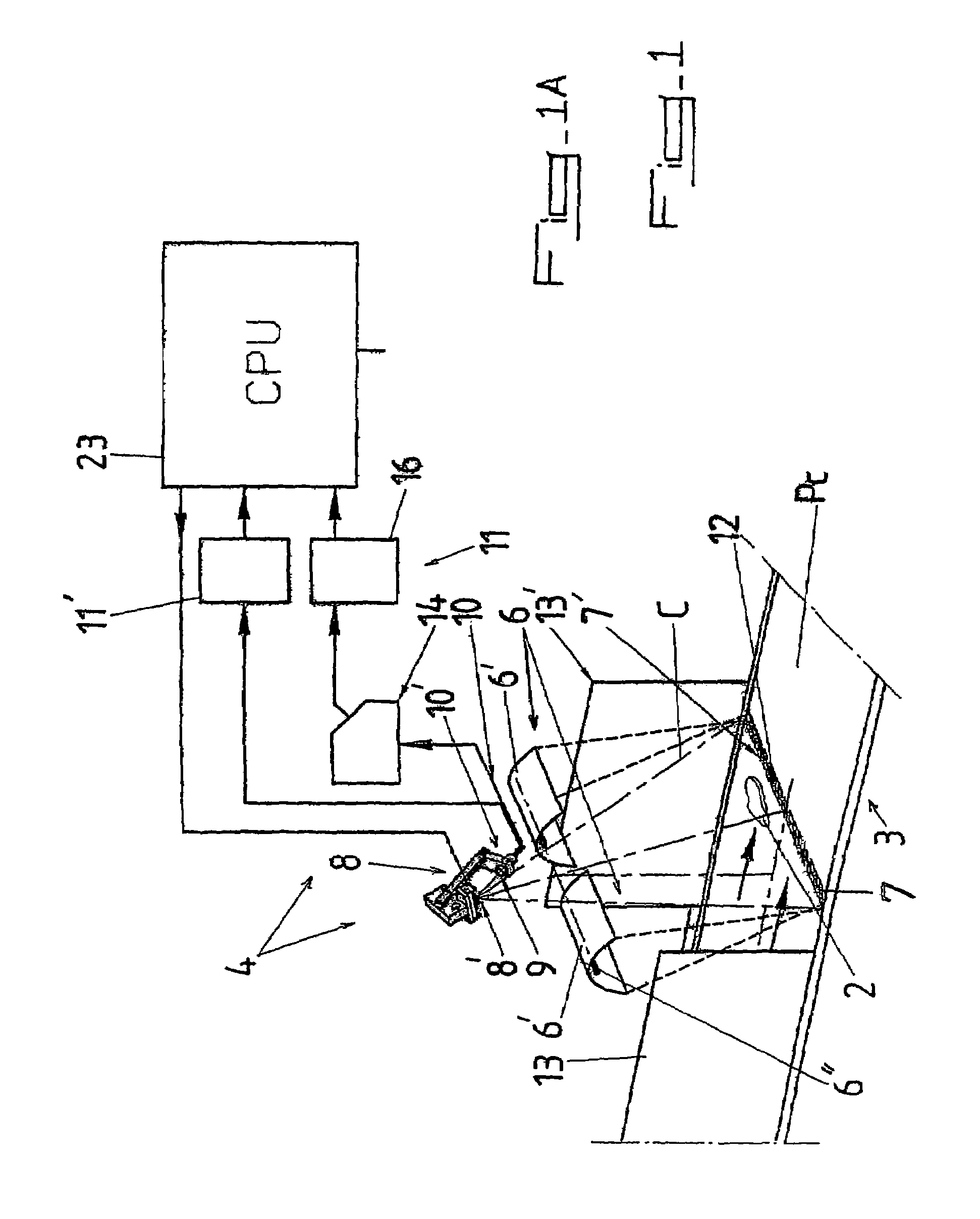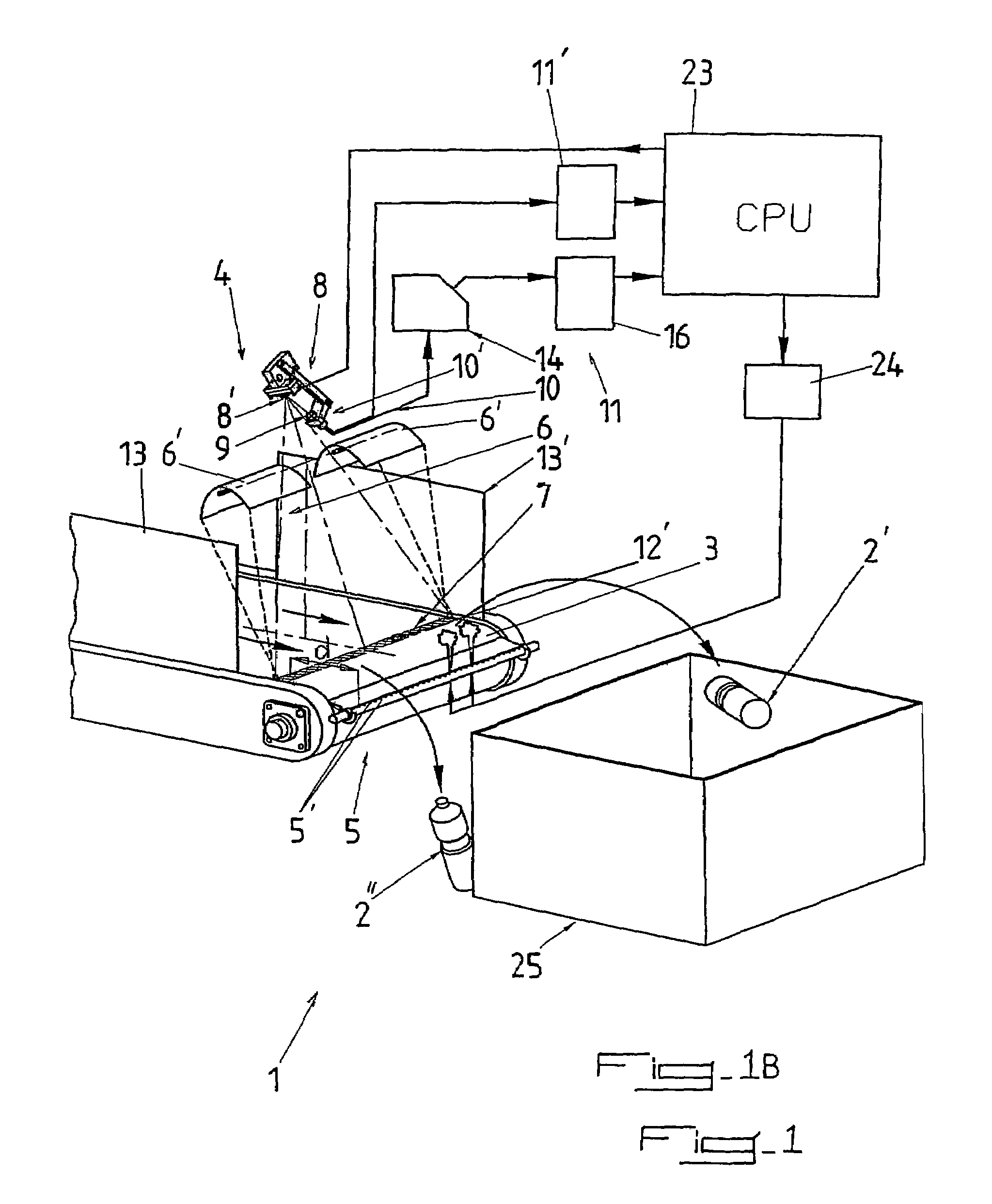Device and method for automatically inspecting objects traveling in an essentially monolayer flow
a technology of automatic inspection and object flow, applied in the direction of measurement devices, material analysis through optical means, instruments, etc., to achieve the effect of simple and economical construction and us
- Summary
- Abstract
- Description
- Claims
- Application Information
AI Technical Summary
Benefits of technology
Problems solved by technology
Method used
Image
Examples
Embodiment Construction
[0102]As shown in the figures of the accompanying drawings, and more particularly FIGS. 1 to 4, the machine for automatically inspecting objects 2 comprises at least one detection station 4 through or beneath which the flow of objects 2 passes, this detection station 4 comprising, in particular:[0103]means 6 for applying electromagnetic radiation in the direction of the plane of conveyance Pc of the conveyor 3, emitting said radiation so as to define a lighting plane Pe, the intersection of said lighting plane Pe and said plane of conveyance Pc defining a detection line 7 extending transversely to the direction of travel of the objects 2,[0104]a receiver device 8 periodically scanning each point on said detection line 7 and receiving radiation reflected by an elementary measuring zone 12 located in the region of the point scanned at this instant, the plane defined by said detection line 7 and the optical input centre 8″ of said device being known as the scanning plane Pb,[0105]means...
PUM
| Property | Measurement | Unit |
|---|---|---|
| wavelength ranges | aaaaa | aaaaa |
| lighting power | aaaaa | aaaaa |
| area | aaaaa | aaaaa |
Abstract
Description
Claims
Application Information
 Login to View More
Login to View More - R&D
- Intellectual Property
- Life Sciences
- Materials
- Tech Scout
- Unparalleled Data Quality
- Higher Quality Content
- 60% Fewer Hallucinations
Browse by: Latest US Patents, China's latest patents, Technical Efficacy Thesaurus, Application Domain, Technology Topic, Popular Technical Reports.
© 2025 PatSnap. All rights reserved.Legal|Privacy policy|Modern Slavery Act Transparency Statement|Sitemap|About US| Contact US: help@patsnap.com



